

Essay on Pustakam in Sanskrit | For Class 8
Pustakam ka Nibandh Sanskrit Mein
नमस्कार! दोस्तों आज इस आर्टिकल में हम आपके साथ (Essay on Pustakam in Sanskrit) पुस्तकम् का निबंध संस्कृत भाषा में शेयर करने जा रहे हैं जैसा कि आप जानते हैं कि पुस्तक का हमारे जीवन में एक बहुत ही महत्वपूर्ण स्थान है यह हमारी परम मित्र होती हैं यह हमें अज्ञान से ज्ञान की ओर अग्रसर करती हैं
पुस्तकों का इतिहास आज से नही बल्कि काफी प्राचीन समय से हैं। पुस्तकों को प्राचीन काल से हमारे महापुरुष लिखते आ रहे हैं। पुस्तकों से हमे काफी कुछ सीखने को मिलता हैं। कई ऐसी पुस्तके हैं जो हमे भविष्य को मजबूत बनाने के लिए ज्ञान देती हैं। हमारे देश के कई महापुरुष ऐसे भी हुए हैं जिन्होंने पुस्तके लिखी हैं और उन पुस्तकों के ज्ञान अपने जीवन में उतारते हैं।
जीवन में ज्ञान की आवश्यकता को पूरा करने के लिए पुस्तकों का होना जरुरी हैं।
इन्हें भी पढ़ें :-
Environment Essay in Sanskrit language
Essay on Sardar Vallabhbhai Patel in Sanskrit

You may like
Your email address will not be published. Required fields are marked *
Save my name, email, and website in this browser for the next time I comment.
Aacharya Chanakya 10 Line in Sanskrit language|आचार्य चाणक्य के बारे में 10 वाक्य संस्कृत भाषा में यहां पढ़िए!
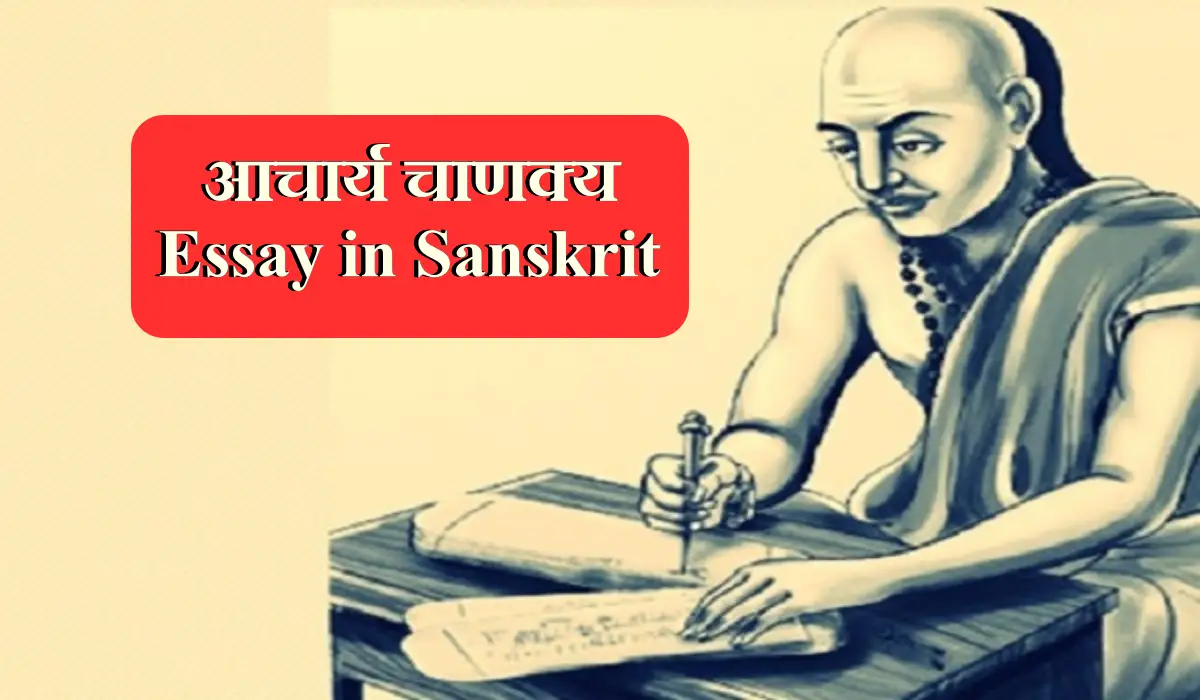
नमस्कार दोस्तों आज के इस आर्टिकल में हम आपके साथ आचार्य चाणक्य के बारे में 10 वाक्य संस्कृत भाषा में शेयर करने जा रहे हैं इ इसके साथ ही उनके जीवन की संक्षिप्त जानकारी (Aacharya Chanakya 10 line in Sanskrit language) आपके लिए लेकर आए हैं, जहां से परीक्षा में अक्सर सवाल पूछे जाते हैं।
चाणक्य राजा चन्द्रगुप्त मौर्य के समय उनके मंत्रीमंडल में महामंत्री थे. चाणक्य का जन्म एक गरीब परिवार में हुआ था इनकी शिक्षा महान शिक्षा केंद्र” तक्षशिला” में हुई। 14 सालो तक चाणक्य ने अध्ययन किया और 26 वर्ष की आयु में इन्होंने अर्थशात्र, समाजशात्र, और राजनीति विषयो में गहरी शिक्षा प्राप्त की।
एक बार की बात है जब मगध वंश के दरबार में इनका अपमान किया गया तब से इन्होंने नन्द वंश को मिटाने की प्रतिज्ञा ली और बाद में चन्द्रगुप्त मौर्य के राजगद्दी में बिठाने के बाद इन्होंने अपनी प्रतिज्ञ पूरी की ओर नन्द वंश का नाश कर दिया। उन्होंने वहां मौर्य वंश स्थापित कर दिया। उस समय नन्द वंशो ने गरीबो की दशा खराब कर रखी थी तब प्रजा की रक्षा की और अपना कर्तव्य का पालन किया. उन्होंने नन्द वंशो को भारत से बाहर किया और एक राजा चन्द्रगुप्त मौर्य को एक अखंड राष्ट्र बनाने में मदद की। मौर्य वंश को बनाने में चाणक्य को श्रेय जाता हैं। चाणक्य कूटनीति को अहम मानते थे। इसलिये इन्हे कुटनीति का जनक भी माना जाता है। इस लिये राजा चन्द्रगुप्त मौर्य ने इन्हे महामंत्री का दर्जा दिया।
चाणक्य का जन्म और नाम
चाणक्य के विषय में इतिहास में ज्यादा प्रमाण नहीं मिलाता है.कुछ विद्वान इनके नाम के पीछे भी अपनी राय रखते है क्योंकि इनका नाम कौटिल्य भी था। कुछ लोग मानते है कुटल गोत्र होने के कारण इनका नाम कौटिल्य पड़ा। भारत में आज भी चाणक्य को चाणक्य और कौटिल्य आदि नामो से ही जाना जाता है। इस सम्बन्ध में महान विद्वान राधाकांत जी ने अपनी रचना में कहा हैं अस्तु कौटिल्य इति वा कौटिल्य इति या चनाक्यस्य गोत्र्नाम्ध्यम”। कुछ लोग ने सीधी राय रखी है चणक का पुत्र होने के कारण इन्हे चाणक्य कहा जाता हैं. कुछ विद्वान मानते है कि इनके पिता ने इनका नाम बचपन में विष्णु गुप्त रखा था जो बाद में चाणक्य और कौटिल्य कहलाये।
10 line on Acharya Chanakya in Sanskrit language
1) चाणक्यः मौर्यवंशप्रथमराज्ञः चंद्रगुप्तस्य मन्त्रीसहायक: च आसीत् ।
2) सः कौटिल्यः वा विष्णुगुप्तः इति नामभ्याम् अपि प्रसिद्धः आसीत्।
3) सः प्राचीनभारतस्यप्रसिद्धतमः कूटनीतिज्ञोऽभवत् ।
4) तस्य साहाय्येन एव चन्द्रगुप्तेन नन्दराज्यम् अवस्थापितम् मौर्यवंशं: स्थापित:च।
5) चाणक्य: अर्थशास्त्रम् इति पुस्तकस्य लेखको आसीत् ।
6) चाणक्यस्य पिता चणकः कचनब्राह्मणः आसीत्।
7) बाल्ये चाणक्यः सर्वान् वेदान् शास्त्राणि च अपठत्।
8) परं सः नीतिशास्त्रम् एव इच्छति स्म ।
9) सः यौवने तक्षशीलायाम् अवसत्।
10) स, कुटनितज्ञ, दार्शनिक च स्तः।
Essay on Raksha Bandhan in Sanskrit for Class 10th |रक्षाबंधन का निबंध संस्कृत में
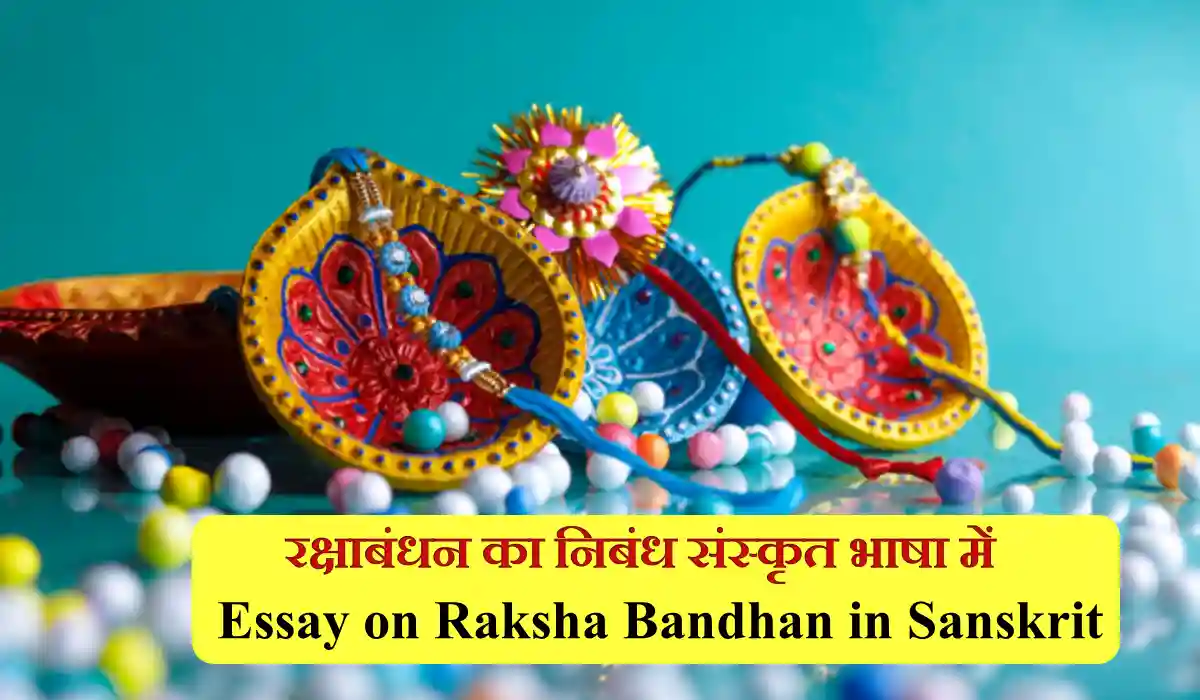
दोस्तों इस आर्टिकल में आज हम (Essay on Raksha Bandhan in Sanskrit) रक्षाबंधन का निबंध संस्कृत भाषा में आपके साथ शेयर करने जा रहे हैं जो की परीक्षा के लिए बहुत ही महत्वपूर्ण हैं परीक्षा में त्यौहार से संबंधित टॉपिक पर निबंध लिखने का अवश्य ही पूछा जाता है हमारे इस आर्टिकल में हमने रक्षाबंधन के 10 वाक्य के साथ-साथ Long Eassy को भी शामिल किया है जिससे कि आपको इसी याद करने में आसानी होगी और आप परीक्षा में अच्छे अंक अर्जित कर सकते हैं.
रक्षाबंधन भारतीय संस्कृति में महत्वपूर्ण त्योहार में से एक है जो भाई बहन के प्यार और संबंध कोदर्शाता है यह पर्वश्रावण मास के पूर्णिमा तिथि को मनाया जाता है इस दिन बहन अपने भाई की कलाई पर राखी बनती है जिसका मतलब होता है कि भाई अपनी बहन की रक्षा करेगा इसके साथ ही भाई अपनी बहन को उपहार देता है रक्षाबंधन एक परिवार में खुशियों और एकता की भावना को बढ़ावा देता है साथ ही भाई बहन के बीच विशेष संबंध को मजबूती प्रदान करता है.
इस दिन प्रात स्नान आदि करके बहने पूजा की थालियां सजाती हैं थाली में राखी के साथ रोली, हल्दी, चावल दीपक, मिठाई और फूल रखती हैं इसके बाद टिका करवाने के लिए भाई को उपयुक्त आसान देती है रोली या हल्दी से भाई का टिका करके चावल को टिके पर लगाया जाता है और सर पर फूलों को छिड़का जाता है उसकी आरती उतारी जाती है, और दाहिनी कलाई पर राखी बांधी जाती है भाई बहन को उपहार या धन देता है इस प्रकार रक्षाबंधन के अनुष्ठान को पूरा करने के बाद ही भोजन किया जाता है.
10 Sentence on Raksha Bandhan in Sanskrit
1. भारतदेश : उत्सवप्रिय : अस्ति , अत्र प्रत्येक मासे दिने व कोऽपि न कोऽपि उत्सव : भवति एव ।
2. येषु अति प्रसिद्धं उत्सव : अस्ति रक्षाबंधन : ।
3. अयम् भ्रातृ भगिन्योः बन्दनस्य पर्वः ।
4. रक्षाबंधन दिवसे भगिनी निज भ्रातु : राखी मणिबन्धनं करोति ।
5. तथांच भ्राता तस्या : रक्षणाय वचनं ददाति ।
6. रक्षाबन्दनस्य प्रतीक रूपमेव राखी ।
7. उत्सव : अयं भ्राता भगिनी च स्नेहस्य प्रतीक : अस्ति ।
8. रक्षाबंधनस्य अयं पवित्रं उत्सवं आर्थिक दृष्ट्या न पश्येयु : ।
9. अस्माकं आपणात् मूल्यवान् राखी न क्रीत्वा साधारणं सूत्रम् एव प्रयोगं कुर्यात्
10. सर्वे संतोषेण उत्साहेन आचरन्ति ।
Long Essay on Raksha Bandhan in Sanskrit
रक्षाबन्धनं श्रावणमासस्य शुक्लपूर्णिमायाम् आचर्यते । भ्रातृभगिन्योः पवित्रसम्बन्धस्य सम्मानाय एतत् पर्व भारतीयाः आचरन्ति । निर्बलतन्तुना बद्धः भ्रातृभगिन्योः सबलसम्बन्धः भारतीयसंस्कृतेः गहनतायाः प्रतीकः । मानवसभ्यतायां विकसिताः सर्वाः संस्कृतयः प्रार्थनायाः माहात्म्यं भूरिशः उपस्थापयन्ति । आदिभारतीयसंस्कृतेः विचारानुगुणं भ्रातुः रक्षायै भगिन्या ईश्वराय कृता प्रार्थना एव रक्षाबन्धनम् । भगिनी ईश्वराय प्रार्थनां करोति यत् , “ हे ईश्वर ! मम भ्रातुः रक्षणं करोतु ” इति । एतां प्रार्थना कुर्वती भगिनी भ्रातुः हस्ते रक्षासूत्रबन्धनं करोति । भगिन्याः हृदि स्वं प्रति निःस्वार्थ प्रेम दृष्ट्वा भ्राता भगिन्यै वचनं ददाति यत् , “ अहं तव रक्षां करिष्ये ” इति । ततः उभौ परस्परं मधुरं भोजयतः । भगिन्या ईश्वराय स्वरक्षणस्य या प्रार्थना कृता , तस्याः प्रार्थनायाः कृते भगिनीं प्रति कृतज्ञता प्रकटयितुं भ्राता भगिन्यै उपहारम् अपि यच्छति । भ्रातृभगिन्योः सम्बन्धस्य एतत् आदानप्रदानम् अमूल्यं वर्तते ।
List of all Animal Name in Sanskrit and Hindi|जानवरों के नाम संस्कृत भाषा में

दोस्तों हमारी पृथ्वी पर पाए जाने वाले जीवो में जानवर, पक्षी और जलीय जीव आते है। अब बात आती है कि जानवर कितने प्रकार के होते है। मुख्यतः जानवरो को जंगली और पालतू जानवरों में विभाजित किया जा सकता है।
जंगली जानवर वो होते है जो जंगलो में आबादी से दूर होते है। इन जानवरों में भी दो मुख्य प्रकार होते है। एक होते है मांसाहारी और दूसरे होते है शाकाहारी। मांसाहारी जानवरो में शेर , चीता, बाघ , भेड़िया जैसे प्राणी आते है। शाकाहारी जानवरो में हिरण, खरगोश , बंदर आदि आते है।
पृथ्वी पर हर तरह की परिस्थिति के अनुकूल जंतु पाये जाते है। करोडों सालों पहले धरती पर डायनासोर भी पाये जाते थे। यह एक भीमकाय सरीसृप प्रजाति का जीव था। इनके अलावा ड्रैगन भी धरती पर पाये जाते थे।
इस आर्टिकल में हम धरती पर पाए जाने वाले कुछ जानवरों के नाम आपके साथ संस्कृत और हिंदी भाषा (All Animal Name in Sanskrit and Hindi) में शेयर करने जा रहे हैं, जो अक्सर परीक्षा में पूछ लिए जाते हैं इस दृष्टि से इनका अभ्यास एक बार अवश्य करें
जलीय जीवों के नाम संस्कृत में (Water Animals Names In Sanskrit)
जंगली जानवरों के नाम संस्कृत में (wild animals names in sanskrit), पालतू जानवरों के नाम संस्कृत में (pet animals names in sanskrit).
दोस्तों उपरोक्त आर्टिकल में शेयर की गई जानकारी (All Animal Name in Sanskrit and Hindi) आपको कैसी लगी हमें कमेंट करके जरूर बताइएगा और ऐसे ही अन्य महत्वपूर्ण टॉपिक से संबंधित जानकारी के लिए हमारी वेबसाइट पर विजिट करते रहिएगा, धन्यवाद!

Fruits Name in Sanskrit Language|| फलों के नाम संस्कृत में
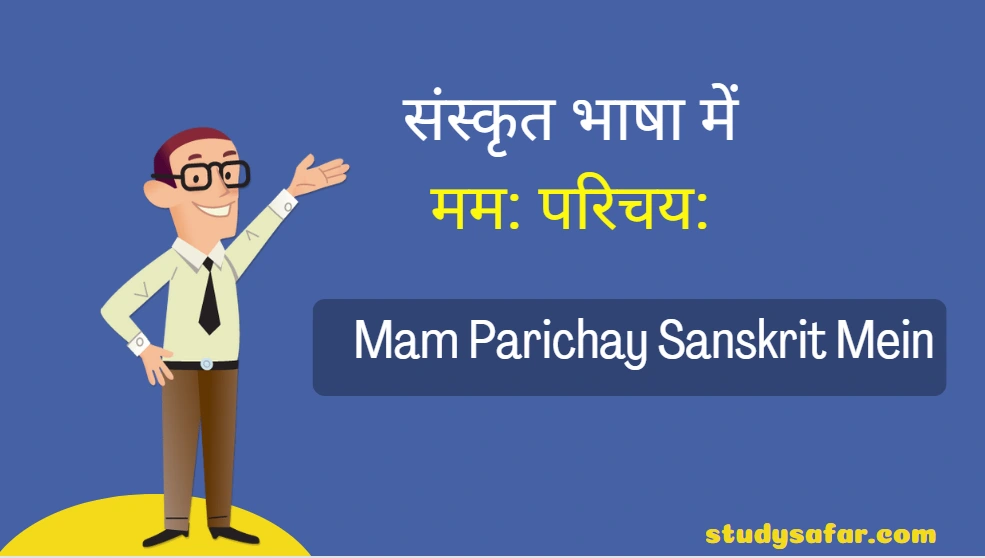
संस्कृत में मम परिचय | Mam Parichay Sanskrit Mein Class 10th

CTET January 2024: केंद्रीय शिक्षक पात्रता परीक्षा के लिए गणित शिक्षण शास्त्र से जुड़े महत्वपूर्ण प्रश्न

CTET 2024 Practice Set: लेव वाइगोत्सकी के सिद्धांत से हर बार पूछे जाते है ये सवाल

TET Exams 2023-24: शिक्षक बनाना चाहते है तो अभी पढ़ें पर्यावरण पेडगॉजी ये सवाल
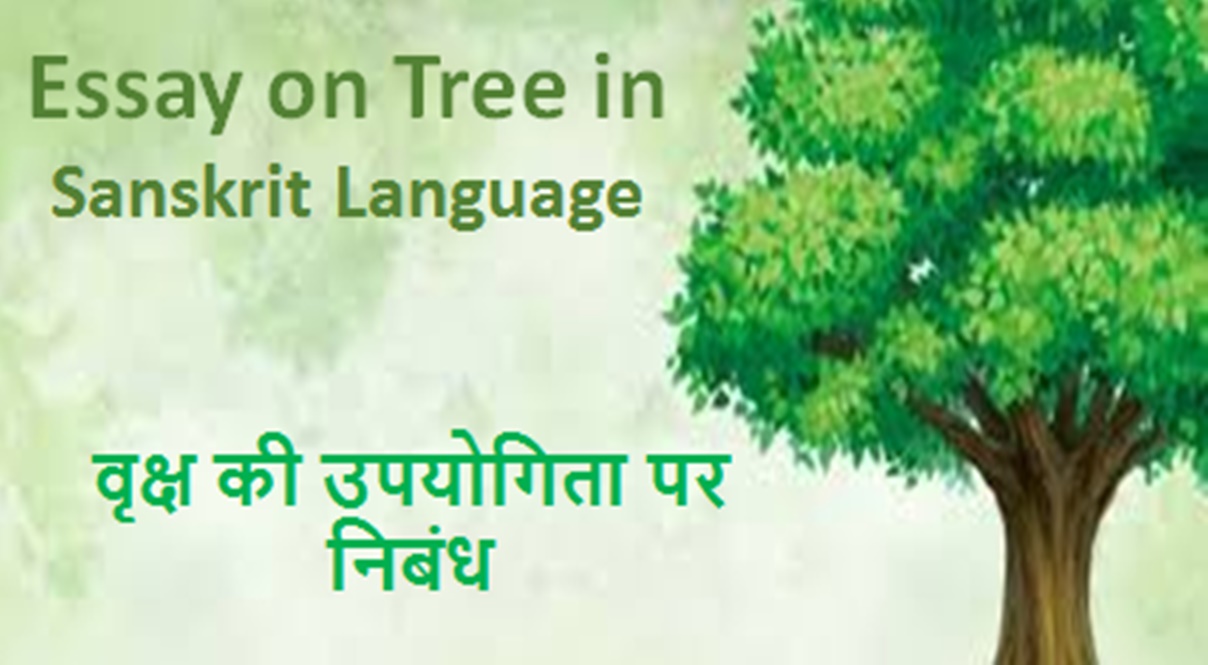
Importance of Trees Essay in Sanskrit
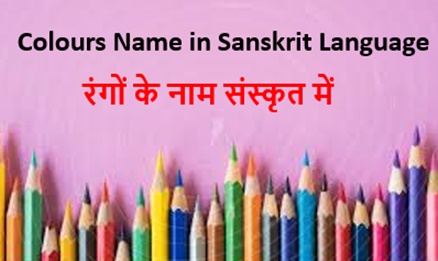
Colours Name in Sanskrit Language || रंगों के नाम संस्कृत में

India Ranking in Different Indexes 2021 pdf in Hindi
Learning Sanskrit
- Visit Ancient Sanskrit Online by Karen Thomson and Jonathan Slocum with details in Table of Contents of the entire series. The research work is being done at Linguistics Research Center in The College of Liberal Arts at University of Texas, Austin. BACK TO TOP Sanskrit dictionary Various Online Sanskrit Dictionaries are listed in https://sanskritdocuments.org/dict. A simple repository of Sanskrit words/meanings in easy-to-extend format. PDF and Text format. Amarakosha , Sanskrit thesaurus.
- AkhyAntachandrikA is a thesaurus for verbs in Sanskrit compiled on the same line of amarakosha for nouns. It is arranged into semantic classes arranged in a certain order. There are some others like dhAturatnAvalI, dhAturatnapradIpaH or maitreyarakShita although they are focussed on their conjugation in groups. A scanned copy of AkhyAntachandrikA are at link no.1 AkhyAntachandrikA (4shared), link no.2 AkhyAntachandrikA (mediafire)
- The links to the 5 volumes of Dhaturatnakara (Jain version) By Muni Lavanyavijaya are (in serial order) http://www.jainlibrary.org/book.php?file=001920 to http://www.jainlibrary.org/book.php?file=001924 One can download them only after registering at the http://www.jainlibrary.org site.
Read Charles Wikner's reply on the purpose of the document here .
Search This Blog
Sanskrit made simple.
The motive of this blog is to enrich the interest of students studying Sanskrit language! 😄
मम प्रिया भाषा - संस्कृतम् । Essay on Sanskrit language in Sanskrit |

Translation in Marathi
ATI Sundar pn thoda ahe ajun pahije hota eassy
Very nice and thank you
Post a Comment
Popular posts from this blog, चित्रकाव्यम्। माध्यमभाषया लिखत।chitrakavyam madhyambhasa answers |.
व्यसने मित्रपरीक्षा। माध्यमभाषया उत्तरत। Vyasane Mitrapariksha Madhyambhasa Answers |
How to score 100 out of 100 marks in sanskrit in ssc board exam useful tips and tricks, आवृत्तिवाचकः। aavruttivachak sanskrit grammar concept |.
Learn Samskrit through correspondence. Learn More
Books for all age groups. quench your samskrit thirst with these books. online order, donate liberally for samskrit. donate now, about samskrita bharati.
Samskrita Bharati (founded 1981) is a movement for the continuing protection, development and propagation of the Sanskritam language as well as the literature, tradition and the knowledge systems embedded in it.
Samskrita Bharati is a non-profit organization comprised of a large team of very dedicated and enthusiastic volunteers who take the knowledge of Sanskrit to all sections of society irrespective of race, gender, region, religion, caste, age etc.
people trained to speak Samskrit
Samskrit teachers trained to teach
Samskrit-Homes given shape
centers across 26 countries world-wide
What we do Reviving a language, rejuvenating a culture
News & media, samvadashala, what we do samskrita bharati.
SPOKEN SAMSKRIT CLASSES
CORRESPONDENCE COURSE
SAMSKRIT THROUGH GITA
SAMVADASHALA DELHI/KASHI
Sanskrit Bharti Connect with us
Samskrita Bharati
View this post on Instagram A post shared by Samskrita Bharati (@samskritbharati)

PLEASE SELECT LANGUAGE :

Grammatical analysis of Sanskrit segment
Analysis of “pustakam”.
Note: this is an experimental feature and shows only the first possible analysis of the sentence. If the system was successful in translating the segment, you will see of which words it is made up of, generally consisting of Nouns, Pronouns, Verbs, Participles and Indeclinables. Click on the link to show all possible derivations of the word.
Grammatical analysis of the Sanskrit text: “pustakam ”—
- pustaka (noun, masculine) [adverb], [accusative single] pustaka (noun, neuter) [adverb], [nominative single], [accusative single]
Extracted glossary definitions: Pustaka
Alternative transliteration: [Devanagari/Hindi] पुस्तकम्, [Bengali] পুস্তকম্, [Gujarati] પુસ્તકમ્, [Kannada] ಪುಸ್ತಕಮ್, [Malayalam] പുസ്തകമ്, [Telugu] పుస్తకమ్
Sanskrit References
“pustakam” in the Sanskrit language represents a word or a combination of words (such as Nouns, Adjectives, Pronouns, etc.). This section shows references to Sanskrit literature where this segment of Sanskrit text occurs, by literally searching for this piece of text.
Kathasaritsagara [sanskrit] (by C. H. Tawney)
Verse 1.8.13 < [Chapter 8]
Verse 1.8.16 < [Chapter 8]
Shiva Purana [sanskrit]
Verse 9.5.10 < [Chapter 5]
Verse 9.13.14 < [Chapter 13]
Verse 7.2.20.14 < [Chapter 20]
Padma Purana [sanskrit]
Verse 5.104.56 < [Chapter 104]
Verse 6.27.53 < [Chapter 27]
Lakshminarayana Samhita [sanskrit] (by Shwetayan Vyas)
Verse 1.144.115 < [Chapter 144]
Verse 1.276.18 < [Chapter 276]
Verse 2.172.22 < [Chapter 172]
Verse 3.138.66 < [Chapter 138]
Verse 3.236.47 < [Chapter 236]
Skanda Purana [sanskrit]
Verse 6.1.58.8 < [Chapter 58]
Harivamsa [text] [sanskrit]
Verse 96.23 [commentary, 1087:3] < [Chapter 96]
Harivamsa [appendix] [sanskrit]
Verse 40.144 [40:10] < [Chapter 40]
Verse 40.144 [41:7] < [Chapter 40]
Verse 40.157 [49:7] < [Chapter 40]
Kubjikamatatantra [sanskrit]
Verse 17.18 < [Chapter 17]
Svacchanda-tantra [sanskrit]
Verse 4.471 < [Chapter 4]
Padma-samhita [sanskrit]
Verse 2.22.50 < [Chapter 22]
Jayakhya-samhita [sanskrit]
Verse 7.57 < [Chapter 7]
Verse 13.218 < [Chapter 13]
Paramesvara-samhita [sanskrit]
Verse 6.80 < [Chapter 6]
Verse 6.188 < [Chapter 6]
Visvaksena-samhita [sanskrit]
Verse 37.103 < [Chapter 37]
Bhavishya Purana [sanskrit]
Verse 1.93.70 < [Chapter 93]
Verse 1.172.48 < [Chapter 172]
Verse 1.216.52 < [Chapter 216]
Verse 2.1.7.20 < [Chapter 7]
Verse 2.1.7.47 < [Chapter 7]
Verse 2.1.7.106 < [Chapter 7]
Verse 2.2.3.34 < [Chapter 3]
If you like this tool, please consider donating: ( Why? )
Donate on Patreon Donate on Liberapay
- Privacy Policy
- Sanskrit Essays
- Sanskrit Translation
- Sanskrit Dictionary
- Panchatantra stories
Other Useful Links
- उपदेश श्लोक
- संस्कृत स्लोगन
- संस्कृत अनुवाद
- संस्कृत गिनती
- संस्कृत शब्दकोष
- गायत्री मंत्र
- बच्चों के नाम
- श्री दुर्गा सप्तश्लोकी
- संस्कृत निबंध
- प्रमुख श्लोक
- संस्कृत श्लोक
- दुर्गा मंत्र
- सरस्वती मंत्र
- लक्ष्मी मंत्र
- श्री कृष्ण मंत्र
- वाल्मीकि रामायण श्लोक
- परोपकार श्लोक
- व्यायाम श्लोक
- चाणक्य नीति श्लोक
- विदुर नीति श्लोक
- भगवद् गीता श्लोक
- विद्या श्लोक
- प्रार्थना श्लोक
- सुभाषितानि श्लोक
- yada yada hi dharmasya
Popular Sanskrit Slokas
- satyamev jayate
- saraswati mantra
- sanskrit shlok
- sanskrit words
- sanskrit baby boy names
- sanskrit names
Recently Added Slokas
- ganpati mantra
- sanskrit names for girls
- panchatantra stories in english
- sanskrit quotes
Sanskrit Vocabulary
- Jewels Names in Sanskrit
- Sanskrit Word For War
- Sanskrit Word For Peace
- Respectful Words in Sanskrit
- Stationery/Writing Material Names in Sanskrit
- Post Office Material Names in Sanskrit
- Human Body Parts Names in Sanskrit
- Flowers Names in Sanskrit
- Internet/Technology Words in Sanskrit
- Domestic Animal Namesin Sanskrit
- Zodiac Signs Names in Sanskrit
- Sanskrit Names of Time Periods
- Planet Names in Sanskrit
- Profession Names in Sanskrit
- Sanskrit Names of Feelings & Emotions
- Kitchen Equipment Names in Sanskrit
- Vegetable Names in Sanskrit
- Fruits Names in Sanskrit
- Relationship Terms in Sanskrit
- Finger Names in Sanskrit
- Basic Sanskrit Words
- Sanskrit Words For Conversation
- Surya Namaskara Mantra Meaning
Sanskrit Essay On Pustkaly (पुस्तकालय संस्कृत निबंध)
यत्र विविधानि पुस्तकानि पठनार्थं संगृहीतानि भवन्ति तत् स्थानम् पुस्तकालयः उच्यते । तत्र हि त्रिविधः पुस्तकालयः व्यक्तिगतः, विद्यालयीयः, सार्वजनिकश्च । व्यक्तिगतः पुस्तकालयः अध्यापकानां अन्येषां बुद्धिजीविनाम् च भवति । विद्यालयीयः विद्यालयस्य अंगम् भवति । छात्राणाम् अध्यापकानाम् च ज्ञानवर्द्धनाय विद्यालयीयः पुस्तकालयः भवति । अत्र शैक्षणिकानि पुस्तकानि संगृहीतानि भवन्ति । निर्धन-छात्राणां कृते विद्यालयीयः पुस्तकालयः अत्युपयोगी भवति । सार्वजनिकेषु पुस्तकालयेषु बहुविधानि पुस्तकानि भवन्ति । पुस्तकालयसम्पर्कात् शनैः -शनैः विद्यारुचिः जागर्ति । सम्प्रति गीतशीलः पुस्तकालयः अपि अस्ति ।
हिन्दी अनुवाद : जहाँ अनेक प्रकार के पुस्तक पढ़ने के लिए संग्रह रहता है उस स्थान को पुस्तकालय कहा जाता है । पुस्तकालय तीन प्रकार के होते है – व्यक्तिगत, विद्यालयीय और सार्वजनिक । व्यक्तिगत पुस्तकालय अध्यापकों के लिए और बुद्धिजीवियों के लिए होता है । विद्यालीय विद्यालय का अंग होता है । छात्रों और अध्यापकों के ज्ञान के बुद्धि के लिए विद्यालीय पुस्तकालय होता है । यहाँ शिक्षण संबंधी पुस्तकें रहते हैं । गरीब छात्रों के लिए यह पुस्तकालय बहुत उपयोगी होता है । सार्वजनिक पुस्तकालय में विभिन्न प्रकार के पुस्तक रहते है । पुस्तकालय के सम्पर्क में रहने से धीरे-धीरे विद्या में रूचि बढ़ता है । आजकल गीतशील पुस्तकालय भी है ।
Also Read: Essay on Deshbhakti Essay on Paropkar Essay on Plantation Essay on Vidya Essay on Vyayam Essay on Women Education
Loved Reading! Share this post:
Related articles, राजस्थानराज्यम् (rajasthan ).
यमुनानदी (Yamuna )

Sanskrit Essay on River Ganges/Ganga(गङ्गानदी)

Sanskrit Essay on Kedarnath (केदारनाथः)
संस्कृत भाषाया: महत्वम् निबंध: | Sanskrit ka Mahatva in Sanskrit Essay

Sanskrit Bhasha Ka Mahatva Essay In Sanskrit: इस पोस्ट मे हम संस्कृत भाषाया: महत्वम् निबंध: (मम प्रिय भाषा संस्कृत निबंध) आप के साथ शेयर के कर रहे है जो इस प्रकार है।

Sanskrit Bhasha Ka Mahatva Essay In Sanskrit
(1) सर्वासामेताषा भाषाणाम इय जननी।
(2) संस्कृत भाषा विश्वस्य सर्वासु भाषासु प्राचीनतम भाषा अस्ति।
(3) संस्कृतभाषामेव विश्वसाहित्य सर्वचाचीनग्रन्था: चत्वारो वेदा: संति येषा महत्वमघाति सर्वेअपरि वर्तते।
(4) संस्कृता भाषा परिशुद्धा व्याकरण सम्बंधिदोषादिरहिता संस्कृत भाषेति निगघते।
(5) संस्कृतभाषा जिवनस्य सर्वसंस्कारेषु संस्कृतस्य प्रयोग: भवति।
(6) प्राचीन समये संस्कृत भाषा एषैव भाषा सर्वसाधारणा आसीत।
(7) संस्कृतभाषैव भारतस्य प्राणभुताभाषा अस्ति राष्ट्रस्य ऐक्य च साधयति भाषा अस्ति।
(8) संस्कृतभाषा सर्वे जानाम आर्याणां सुलभा शोभना गरिमामयी च संस्कृत भाषा वाणी अस्ति।
(9) अव एव उच्यते संस्कृति: संस्कृताश्रिता।
(10) अश्वघेाष कालिदास दडि भवभुति जयदेव आदि कवि प्रभ्रतयो महाकवयो नाटकाराश्च संस्कृतभाषाया: अस्ति।
(11) मुलरूपज्ञानाय एतस्य आवश्यकता भवति।
(12) भाषा संस्कृतभाषा अधुनाअपि सडगणकस्य कृते संस्कृतभाषा अति उपयुक्ता भाषा अस्ति।
(13) भारतीय गौरवस्य रक्षण भुताभाषा एतस्य: प्रसारच सवैरेव कर्त्तवय:।
ये भी पढे:
For Latest Update Please join Our Social media Handle
Related Posts:
- [PDF Notes] Upsarg Aur Pratyay | जानें उपसर्ग तथा…
- Indian Economy For RRB NTPC Exam || Top 50 Questions
- Application For Transfer Certificate In Sanskrit-…
- List of Essay in Sanskrit For Class 5 to 12 (NCERT)
- संस्कृत निबंध: Essay on Diwali In Sanskrit || Long &…
- संस्कृत में कंप्यूटर पर निबंध | Essay on Computer In…
Leave a Comment Cancel reply
Save my name, email, and website in this browser for the next time I comment.
Bhagavad Gita/Mahatmyam
From stotrasamhita, ||gitamahatmyam||.
zrI viSNuruvAca
sarvE dEvAzca RSayO yOginaH pannagAzca yE|
||iti zrIvArAhapurANE zrIgItAmAhAtmyaM sampUrNam||
Personal tools
- Random page
- Recent changes
Choose a script
- What links here
- Related changes
- Special pages
- Printable version
- Permanent link
- This page was last modified on 1 January 2019, at 07:45.
- This page has been accessed 23,348 times.
- Privacy policy
- About StotraSamhita
- Disclaimers
- Cracking the Code: Using Binary Translator for Educational Excellence
- Chitra Varnan in Sanskrit for Class 10
- Evaluating School Readiness: Using an Age Calculator as a Tool
- CBSE Class 10 Sanskrit Sample Paper with Solution 2023-24
- Bridging the Gap: Google’s Office in India as a Catalyst for Education

Knowledge Gallery
An Overall Knowledge Platform

पुस्तक शब्द के रूप | Pustak Shabd Roop in Sanskrit
पुस्तक (book) शब्द के रूप | pustak shabd roop in sanskrit.
Pustak Shabd Roop in Sanskrit – पुस्तक शब्द अकारांत नपुंसकलिंग संज्ञा शब्द है। सभी नपुंसकलिंग संज्ञाओ के रूप इसी प्रकार बनायें जाते हैं, जैसे- फल, ज्ञान, धन, जल, अन्न, हृदय, वन, कमल, कुल, कार्य, काल, कोमल, कौशल, क्षेत्र, ऋण, उपवन, नगर, गृह, खाद्य, चक्र, चित्र, चरित्र, छत्र, जन्म, जीवन, दुग्ध (दूध), दिन, द्वार, नगर, पत्र, पुष्प (फूल), पद्य, बल, पुस्तक, मित्र, मुख, नक्षत्र आदि।
अजन्त (अकारांत) पुल्लिङ्ग् शब्द रूप (Shabd Roop)
बालक के शब्द रूप
राम के शब्द रूप


Share this:
- Click to share on WhatsApp (Opens in new window)
- Click to share on Telegram (Opens in new window)
- Click to share on Facebook (Opens in new window)
- Click to share on Twitter (Opens in new window)
- Click to share on LinkedIn (Opens in new window)
- Click to share on Reddit (Opens in new window)
- Click to share on Tumblr (Opens in new window)
- Click to share on Pinterest (Opens in new window)
- ← पुष्प शब्द के रूप | Pushp Shabd Roop in Sanskrit
- बल शब्द के रूप | Bal Shabd Roop in Sanskrit →
You May Also Like
स्तुति शब्द के रूप | stuti shabd roop in sanskrit, मिल् धातु के रूप | mil dhatu roop in sanskrit.

Apadan Karak Panchami Vibhakti in Sanskrit
One thought on “ पुस्तक शब्द के रूप | pustak shabd roop in sanskrit ”.
U are the best
Leave a Reply
Your email address will not be published. Required fields are marked *
Save my name, email, and website in this browser for the next time I comment.
Sanskrit Cases and Tenses विभक्तयः लकाराः च। (vibhaktayaḥ lakārāḥ ca।)
Skill level, intermediate, sanskrit explained in english.
Hope you have understood and learnt Word Classes & Grammatical Numbers, Persons and Genders in chapter 1 and 2 respectively.
‘Cases and Tenses’ is the third chapter in this series which explains the different types of Cases and Tenses that are in the Sanskrit language.
In Sanskrit, there are word cases and verb forms. Word cases are the forms of a particular word in which every form is used in a particular context and has a specific meaning. Verb forms are forms of verbs. These are always the same as the doer/receiver of the action (depending on the voice used).
Learning this chapter will help you:
- Understand types of Word Cases
- Understand types of Tenses
Who is the chapter for?
- A person interested in learning Sanskrit.
- One who wants to learn Sanskrit word cases
- One who wants to learn Sanskrit Tenses
Word Cases and Tenses विभक्तयः लकाराः च। (vibhaktayaḥ lakārāḥ ca।)
In Sanskrit, there are various types of word cases and tenses. Let’s look at these in detail.
Word Cases:
In Sanskrit, there are eight word cases. They are 1. Nominative , 2. Accusative , 3. Instrumental , 4. Dative , 5. Ablative , 6. Genitive , 7. Locative and 8. Vocative (In the given order).
There are two terms that are given, विभक्तिः (vibhaktiḥ) and कारकम् (kārakam). विभक्तिः (vibhaktiḥ) is basically the name of the case, whereas कारकम् (kārakam) tells the meaning of the case.
The word’s form for each case and the grammatical number will change. Sometimes, a certain word requires a particular विभक्तिः (vibhaktiḥ) and at that time, it is known as an उपपदविभक्तिः (upapadavibhaktiḥ)
These are the cases along with their meanings:
Nominative Case:
The विभक्तिः (vibhaktiḥ) for this is प्रथमा (prathamā) and this is the first case. Its कारकम् (kārakam) is कर्ता (kartā) . The nominative case is used for the subject in the sentence. The subject in the sentence is the one who does the action or the doer of the action. Some examples for the nominative case are:
बालः भोजनं खादति। (bālaḥ bhojanaṃ khādati।), This means, “A boy is eating food.” Here, the word, “बालः” is the subject of the sentence and is in singular as there is only one boy. Therefore, the word is in the nominative case, singular. Here, the boy is the one who is doing the action of eating, so he is the subject.
बाला क्रीडाङ्गणे क्रीडति। (bālā krīḍāṅgaṇe krīḍati।), this means, “A girl is playing in the playground.” Here, the word, ” बाला” is the subject of the sentence and is in singular as there is only one girl. Therefore, the word is in the nominative case, singular. Here, the girl is the one doing the action of playing, so she is the subject.
Accusative Case:
The विभक्तिः (vibhaktiḥ) for this is द्वितीया (dvitīyā) and this is the second case. Its कारकम् (kārakam) is कर्म (karma) . The accusative case is used for the object in the sentence. The object in the sentence is the one whom the action is done to or the receiver of the action. Some examples for the accusative case are:
लेखकः पुस्तकं लिखति। (lekhakaḥ pustakaṃ likhati।), this means, “An author is writing a book.” Here, the word, “पुस्तकम्” (pustakam) is the object of the sentence and is in singular as there is only one book. Therefore, the word is in the accusative case, singular. Here, the book is being written, so it is the object.
शिक्षिका बालकान् पाठयति। (śikṣikā bālakān pāṭhayati।), this means, “A teacher is teaching children.” Here, the word, ” बालकान्” is the object of the sentence and is in plural as there are many books. Therefore, the word is in the accusative case, plural. Here, the children are being taught, so they are the objects.
Instrumental Case:
The विभक्तिः (vibhaktiḥ) for this is तृतीया (tṛtīyā) and this is the third case. Its कारकम् (kārakam) is करणम् (karaṇam) . The instrumental case is used for the thing by whose help the action in the sentence is done. This is often used in sense, “by/with”. Some examples for instrumental case are:
छात्रः लेखन्या लिखति। (chātraḥ lekhanyā likhati।), this means, “A student is writing with a pen.” Here, the word, “लेखन्या” is the instrument of the sentence. The word is in singular as there is only one pen. Therefore, the word is in the instrumental case, singular. Here, the pen is being used to make the action of writing possible, so it is the instrument.
सा हस्तेन खादति। (sā hastena khādati।), this means, “She is eating using her hand.” Here, the word, “हस्तेन” is the instrument of the sentence. The word is in singular as there is only one hand. Therefore, the word is in the instrumental case, singular. Here, the hand is being used to make the action of eating possible, so it is the instrument.
Dative Case:
The विभक्तिः (vibhaktiḥ) for this is चतुर्थी (caturthī) and this is the fourth case. Its कारकम् (kārakam) is सम्प्रदानम् (sampradānam) . The dative case is used for the thing for which the action is done in the sentence. Some examples for the dative case are:
छात्राः पठनाय विद्यालयं गच्छन्ति। (chātrāḥ paṭhanāya vidyālayaṃ gacchanti।), this means, “Students go to the school for learning.” Here, for the word, “पठनाय” the action in the sentence is performed. Therefore, the word is in the dative case. The students do the action of going to the school for learning.
भक्ताः देवस्य प्रार्थनायै मन्दिरं गच्छन्ति। (bhaktāḥ devasya prārthanāyai mandiraṃ gacchanti।), this means, “Devotees go to the temple to pray to god.” Here, for the word, “प्रार्थनायै” the action in the sentence is performed. Therefore, the word is in the dative case. The devotees do the action of going to the temple for praying to god.
Ablative Case:
In Sanskrit, the विभक्तिः (vibhaktiḥ) for this is पञ्चमी (pañcamī) and this is the fifth case. Its कारकम् (kārakam) is अपादानम् (apādānam) . The ablative case is used in the sense, “from”. Some examples for the ablative case are:
वृक्षात् फलं पतति। (vṛkṣāt phalaṃ patati।), this means, “A fruit falls from the tree.” Here, the word, “वृक्षात्” tells from where the action of falling is happening in the sentence. Therefore, the word is in the ablative case. Here, the action of the fruit falling is happening from the tree.
अहं गृहात् पुस्तकालयं गच्छामि। (ahaṃ gṛhāt pustakālayaṃ gacchāmi।), this means, “I go to the library from my house.” Here, the word, “गृहात्” tells from where the action of going to the library is happening in the sentence. Therefore, the word is in the ablative case. Here, the action of me going to the library is from my house.
Genitive Case:
The विभक्तिः (vibhaktiḥ) for this is षष्ठी (ṣaṣṭhī) and this is the sixth case. Its कारकम् (kārakam) is सम्बन्धम् (sambandham). The genitive case is used in the sense, “of” and is used to show possession. Some examples for the genitive case are:
सुनीलस्य पुस्तकं हरितवर्णम् अस्ति। (sunīlasya pustakaṃ haritavarṇam asti।), this means, “Suneel’s book is green-coloured.” Here, the word, “सुनीलस्य” tells that the object in the sentence belongs to Suneel. Therefore, the word is in the genitive case. Here, the green-coloured book belongs to Suneel.
धनिकस्य गृहं विशालम् अस्ति। (dhanikasya gṛhaṃ viśālam asti।). this means, “The rich man’s house is very big.” Here, the word, “धनिकस्य” tells that the object in the sentence belongs to the rich man. Therefore, the word is in the genitive case. Here, the big house belongs to the rich man.
Locative Case:
In Sanskrit, the विभक्तिः (vibhaktiḥ) for this is सप्तमी (saptamī) and this is the seventh case. Its कारकम् (kārakam) is अधिकरणम् (adhikaraṇam) . The locative case is used in the sense, “in” and is used to show the location of a particular object. Some examples for the locative case are:
उद्याने बहूनि सुन्दराणि पुष्पाणि सन्ति। (udyāne bahūni sundarāṇi puṣpāṇi santi।), this means, “There are many beautiful flowers in the garden.” Here, the word, “उद्याने” tells that the object in the sentence is in the garden. Therefore, the word is in the locative case. Here, the flowers are located in the garden.
वने बहवः वृक्षाः सन्ति। (vane bahavaḥ vṛkṣāḥ santi।), this means, “There are many trees in the forest.” Here, the word, “वने” tells that the object in the sentence is in the forest. Therefore, the word is in the locative case. Here, the trees are located in the forest.
Vocative Case:
In Sanskrit, the विभक्तिः (vibhaktiḥ) for this is not considered to be independent and is a considered a part of प्रथमा (prathamā) . Its कारकम् (kārakam) is सम्बोधनम् (sambodhanam) . The vocative case is used to call someone. Some examples for the locative case are:
हे मित्र! अत्र आगच्छ। (he mitra! atra āgaccha।), this means, “Hey Friend! Come here.” Here, the word, “मित्र” is used to call the friend. Therefore, the word is in the vocative case.
हे भ्रातः! भवान् कुत्र गच्छति? (he bhrātaḥ! bhavān kutra gacchati?), this means, “Brother! Where are you going?” Here, the word, “भ्रातः” is used to call the brother. Therefore, the word is in the vocative case.
Tenses are known as लकाराः (lakārāḥ) . In Sanskrit, there are no simple or continuous tenses. There are a total of ten tenses in Sanskrit and they are as follows:
Out of the ten tenses mentioned above, only five are commonly used. They are:
We will now look at these five commonly used tenses in more detail.
लट्-लकारः (laṭ-lakāraḥ):
This is the present tense. It is used to show that something has started in the past and is continuing into the present, or can also be used to show a routine activity, universal truth or a habit. Some examples are:
शिक्षिका पाठयति। (śikṣikā pāṭhayati।), this means, “A teacher is teaching.” Here, an activity that has started in the past is continuing into the present.
प्रतिदिनं सः पुस्तकं पठति। (pratidinaṃ saḥ pustakaṃ paṭhati।), this means, “Every day, he reads a book.” Here, his reading a book every day is a habit.
लृट्-लकारः (lṛṭ-lakāraḥ):
This is the simple future tense. This is used to denote that something is going to happen in the future. Some examples are:
छात्रः श्वः विद्यालयं गमिष्यति। (chātraḥ śvaḥ vidyālayaṃ gamiṣyati।), this means, “Tomorrow, the student will go to school.” Here, the action of going to school is to be done in the future
लेखकः पुस्तकं लेखिष्यति। (lekhakaḥ pustakaṃ lekhiṣyati।), this means, “The author is going to write a book.” Here, the action of writing is going to be done in the future.
लोट्-लकारः (loṭ-lakāraḥ):
This is the imperative mood. This is used in the sense to order someone to do something. Some examples are:
माता कथयति, “पुत्र, भोजनं खाद”। (mātā kathayati, “putra, bhojanaṃ khāda”।), this means, “The Mother is saying, “Son, eat your food.” Here, the mother is ordering her son to eat, therefore, it is in imperative mood.
शिक्षिका कथयति, “बालक, पुस्तकं पठ”। (śikṣikā kathayati, “bālaka, pustakaṃ paṭha”।), this means, “The teacher is saying, “Boy, read the book.” Here, the teacher is ordering the boy to read the book, therefore it is in imperative mood.
लङ्-लकारः (laṅ-lakāraḥ):
This is the past imperfect tense. This is used to refer to some action that happened in the past. Some examples are:
अहम् आम्रम् अखादम्। (aham āmram akhādam।), this means, “I ate a mango.” Here, the action of eating a mango was done in the past, therefore it is in past tense.
सूदः भोजनम् अपचत्। (sūdaḥ bhojanam apacat।), this means. “The cook cooked the meal”. Here, the action of cooking was done in the past, therefore it is in past tense.
विधिलिङ्-लकारः (vidhiliṅ-lakāraḥ):
This is the potential mood. This is used to show that something should be done, where it may be done or may not be done afterwards. Some examples are:
परीक्षासमये छात्रः पठेत्। (parīkṣāsamaye chātraḥ paṭhet।), this means, “During the examination time, the student should study.” Here, the student studying is potential; here it is only given that the student should study, there is no obligation for him to study; it is entirely up to the student, whether to study or not.
बालिका सुन्दरं आकाशं पश्येत्। (bālikā sundaraṃ ākāśaṃ paśyet।), this means, “The girl should see the beautiful sky.” Here, the girl seeing the beautiful sky is potential; here it is only given that the girl should see it, there is no obligation for her to see it; it is entirely up to her, whether to see it or not.
After going through the five tenses above, the following sentences are a reiteration of the concept using one verb, i.e. – √पठ्, meaning ‘to read’. The verb forms of √पठ् are in प्रथमपुरुषः (Third Person) and एकवचनम् (Signular), as per the subject. If you wish to see all the verb forms in the five tenses, you can go to our post titled ‘Sanskrit Verbs’ or click here .
लट् लकारः (Present Tense) – बालकः पुस्तकं पठति। – The boy is reading a book.
लृट् लकारः (Simple Future Tense) – बालकः पुस्तकं पठिष्यति। – The boy will read a book.
लङ् लकारः (Past Imperfect Tense) – बालकः पुस्तकम् अपठत्। – The boy read a book.
लोट् लकारः (Imperative Mood) – बालकः पुस्तकं पठतु। – Let the boy read a book.
विधिलिङ् लकारः (Potential Mood) – बालकः पुस्तकं पठेत्। – The boy should read a book.
You might also be interested in these sections
Sanskrit letters.
When explaining tenses, the same verb form can be adopted. This will help a beginner to understand how sentences are formed in present tense, past tense, future tense etc ….
We have added additional content at the end of the post for clarifying your query.
Thanks for sharing
Leave a Reply Cancel reply
Your email address will not be published. Required fields are marked *
Save my name, email, and website in this browser for the next time I comment.

English Sanskrit Dictionary | आंग्लभाषा संस्कृतम् शब्दकोशः
The keyboard uses the ISCII layout developed by the Government of India. It is also used in Windows, Apple and other systems. There is a base layout, and an alternative layout when the Shift key is pressed. If you have any questions about it, please contact us.
- Pronunciation
- Word Network
pustakam (pustakam) - Meaning in English
Interpreted your input " pustakam " as " पुस्तकम् ".
पुस्तकम् - Meaning in English
What is another word for pustakam ?
Sentences with the word pustakam
Words that rhyme with pustakam
English Sanskrit Translator
What is pustakam meaning in English?
Other languages: pustakam meaning in Hindi
Tags for the entry "pustakam"
What is pustakam meaning in English, pustakam translation in English, pustakam definition, pronunciations and examples of pustakam in English.
SHABDKOSH Apps
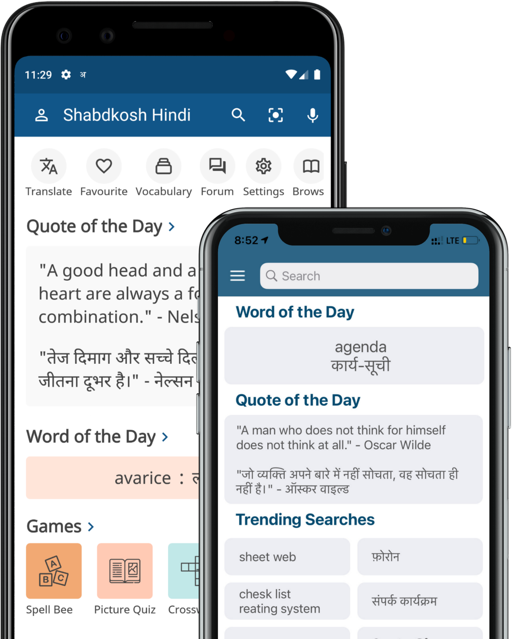
Ad-free experience & much more

Basic rules of grammar

French words used in English

Punctuation rules
Our Apps are nice too!
Dictionary. Translation. Vocabulary. Games. Quotes. Forums. Lists. And more...

Vocabulary & Quizzes
Try our vocabulary lists and quizzes.
Vocabulary Lists
We provide a facility to save words in lists.
Basic Word Lists
Custom word lists.
You can create your own lists to words based on topics.
Login/Register
To manage lists, a member account is necessary.
Share with friends
Social sign-in.
Translation

If you want to access full services of shabdkosh.com
Please help Us by disabling your ad blockers.
or try our SHABDKOSH Premium for ads free experience.
Steps to disable Ads Blockers.
- Click on ad blocker extension icon from browser's toolbar.
- Choose the option that disables or pauses Ad blocker on this page.
- Refresh the page.
Spelling Bee
Hear the words in multiple accents and then enter the spelling. The games gets challenging as you succeed and gets easier if you find the words not so easy.
The game will show the clue or a hint to describe the word which you have to guess. It’s our way of making the classic hangman game!
Antonym Match
Choose the right opposite word from a choice of four possible words. We have thousand of antonym words to play!
Language Resources
Get our apps, keep in touch.
- © 2024 SHABDKOSH.COM, All Rights Reserved.
- Terms of Use
- Privacy Policy
Liked Words
Shabdkosh Premium
Try SHABDKOSH Premium and get
- Ad free experience.
- No limit on translation.
- Bilingual synonyms translations.
- Access to all Vocabulary Lists and Quizzes.
- Copy meanings.
Already a Premium user?

Gazing Skyward, and Awaiting a Moment of Awe
Millions of people making plans to be in the path of the solar eclipse on Monday know it will be awe-inspiring. What is that feeling?
Supported by
- Share full article
By Elizabeth Dias
Videos by Stella Blackmon
This article is part of The Times’s coverage of the April 8 eclipse , the last time a total solar eclipse will be visible in most of North America for 20 years.
- Published April 7, 2024 Updated April 8, 2024
Follow our live updates on the total solar eclipse .
The moment she saw the sun, something inside Julie McKelvey changed.
She was hanging from a rope on the side of Mt. Everest, four hours from the summit. The night was frozen, the slope some 60 degrees steep, the oxygen thin as she ascended to the highest point on earth. In the dark, she felt the fear and power of the mountain. She focused on exactly where to put her foot, her hand, alongside her fellow climbers.
Then, peripherally to her right, she saw an orange flash.
“I see this sunrise that I will never forget as long as I live,” she reflected. “The colors — it is just red, and then it is orange, and then it is yellow, and then the blue is coming. It was so incredibly spiritual for me, and beautiful.”
Ms. McKelvey, a mother and executive from central Pennsylvania, searched for words to capture the emotion of that moment. She felt so connected with something so much bigger than herself, something that she believed loved her. “The whole thing is very awe-ful. A-w-e,” she said, meaning full of awe.
On Monday, millions of people are hoping for their own sun-powered experience of awe. A total solar eclipse will sweep across North America, from Mazatlán up through Indiana to Newfoundland. More than 30 million people live in the path of totality, where for a few brief minutes the moon will entirely block out the sun, and darkness will swallow the light of day. A halo will glow white behind the moon, the sun’s corona.

Amid the rush to purchase eclipse glasses to protect one’s eyes and to check if clouds will disrupt the view, a deeper human experience is unfolding. The eclipse taps into a primal emotion, and evokes for many a sort of mystical moment and childlike wonder, as awareness of the celestial encompasses the earth. It is a present reminder to everyone, on the same day, that life can be magical.
For a nation pulled apart by every manner of division, the eclipse and the awe it inspires offers a moment of unity, if brief. It is a reminder of the collective experience of being alive, of the dance between spirituality and science, and the sheer astonishment at being part of the greater story of things.
“Astronomical phenomena have probably likely always been a source of awe and fear, from ever since Homo sapiens could stand upright and look at the night sky,” said Priyamvada Natarajan, a professor of astronomy at Yale University. “In these really turbulent times, these experiences of collective awe are probably extremely helpful in showing us to transcend the day-to-day noise and chaos of our lives, and of nations’ lives.”
In ancient days, communities in India believed an eclipse was a demon swallowing the sun, Ms. Natarajan said. But now an eclipse is an opportunity to pay homage to the explanatory power of science. And in modern secular society, it offers a sense of belonging, a collective moment like the religious expression of prayer and gratitude. “The question is about transcendence,” she said.
Even NASA, in its scientific, moment-by-moment breakdown of the eclipse, urges “stealing a peek at the people around you — many people have a deep emotional response when the sun goes into totality.”

Brother Guy Consolmagno, the director of the Vatican Observatory, the pope’s official astronomical institute that dates back to the Renaissance, hopes to see the eclipse from Indiana through his small Celestron binoculars.
He remembered the feeling of awe he felt returning from Antarctica and being able to see the Eta Carinae nebula for the first time. And the moment in the lab studying meteorites when he saw a pattern in the data that he had never before seen.
“The universe is elegant, it is beautiful, and it’s beautiful in a way that surprises you,” Brother Consolmagno said. “Maybe it’s a sense of what God is like.”
If you had no idea the eclipse was happening, it would be terrifying, he said. But when you can predict down to the second when it starts, when it will be at its maximum and when it will be finished, “it becomes a delight that I can be so in tune with the universe,” he said. “That, to me, crystallizes what it is to be a scientist, to be clever enough to predict, but then open to being surprised.”
The English word “awe” comes from early Scandinavian around the 12th century, meaning “fear, terror, dread,” at times mixed with reverence in relation to God or the divine, according to lexicographers at the Oxford English Dictionary . By the time of Shakespeare, the word was used in reference to great earthly rulers, the sense of fear mixed with reverence and wonder.
But by the 18th century, in the Age of Enlightenment, which emphasized reason and science, awe shifted from a religious context to the power and beauty of the natural world.

The semantics of the word are linked to fear, but awe is actually a positive emotion, said Dacher Keltner, a psychologist at the University of California, Berkeley, who wrote a book on awe.
“Awe is an emotion when you encounter things you don’t understand,” he said. “Wonder follows experiences of awe because you want to explain the mystery of it.”
The sense of the transcendence in religion is not that different from what he sees as a scientist in encountering evolution. “We are probably talking about the same experience,” Mr. Keltner said.
Today, half of American adults report feelings of loneliness, and technology disconnects people from lived physicality of the human experience. Virtual realities promised an “awesome” future but have not delivered, Mr. Keltner said, and people are hungry for something more, for transcendent emotions, for a sense of loss of self.
“There is something profound about sharing our awareness of meaningful events,” he said.
Ancient Sanskrit texts like the Bhagavad Gita mention adbhuta, describing an expression of awe and wonder that is scary, said Deepak Sarma, professor of Indian religions and philosophy at Case Western Reserve University. Even though adbhuta has something fearful in it, it is beautiful.
“Maybe something that is wonderful ought to be something feared,” said Professor Sarma, who uses the pronouns they and them. The eclipse will pass right overhead the professor’s home, and they plan to go outside and invoke various Hindu prayers and Wiccan rituals, with their partner and cat.

The eclipse is egalitarian, available to everyone, and not just humans. “All sentient creatures are going to experience this, even not sentient creatures,” they said, noting that even the stones on the ground will cool when the sun disappears.
During the 2017 total eclipse, Daniel Beverly, a postdoctoral research fellow at Indiana University, measured what happened to individual sagebrush leaves when the sun went dark. The plant showed biochemical signs of stress, as photosynthesis stopped and carbon uptake slowed, he said.
This time, he has experiments set up to measure the impact on an entire forest of sugar maples, white oaks, tulip poplars and sassafras. It is a rare chance to learn how an eclipse affects not just one individual, but an entire ecosystem, Mr. Beverly said.
“We never get to make an entire forest go dark for four minutes,” he said. “It is an opportunity to connect dots we don’t normally get to.”
Awe is found not just in the skies. The eclipse will not pass over Arizona, but at the bottom of the Grand Canyon, Sarah Haas, deputy chief of science and resource management for the national park, is filled with awe looking up from the Colorado River.
“You are getting a snapshot from the bottom of the earth, looking back, the colors and the sky, from the river,” she said. “There is something very connecting to the soul about that experience.”
Away from technology and cellphone service, there is a sense of being part of the story of the canyon, carved over millions of years. Ms. Haas feels it in the smell of being in the riparian zone at the river’s edge, in the sight of how the red boulders have landed over time and in the surprises of water coming up from springs.

“The river is this living entity, that is moving and adjusting over time, and you are just on the ride of that day’s experience of the river and the rocks and the rapids,” she said.
When a group leaves to travel down the river with a group, it quickly becomes self-reliant, and strangers become family, dependent on one another for survival, Ms. Haas said.
“You have to keep in mind there are things that could hurt you, or things the canyon needs to do to evolve and to grow that you have to be aware of, like flash flooding or rockfalls,” she said.
A year after she climbed Mt. Everest, Ms. McKelvey is still unpacking the emotion of the enormity of the mountain. She recently finished another summit, becoming one of few women in the world to top the highest peaks on all seven continents.
Like the experience of the eclipse’s totality, which lasts only a few minutes, her time at the summit of Everest was brief, maybe just 20 minutes, she said. Perhaps that may be part of the revelation.
“What I am realizing is, it was the process the whole time. It was never about the top of any of the mountains,” Ms. McKelvey said.
Most awe-inspiring of all was simply being present to the moment, both to the world and to those around her as they suffered together in the cold and cheered each another on, she said.
“That is where the magic is,” she said. “I’m not living in the past, I’m not living in the future … I am just here.”
Elizabeth Dias is The Times’s national religion correspondent, covering faith, politics and culture. More about Elizabeth Dias
Advertisement
HindiVyakran
- नर्सरी निबंध
- सूक्तिपरक निबंध
- सामान्य निबंध
- दीर्घ निबंध
- संस्कृत निबंध
- संस्कृत पत्र
- संस्कृत व्याकरण
- संस्कृत कविता
- संस्कृत कहानियाँ
- संस्कृत शब्दावली
- Group Example 1
- Group Example 2
- Group Example 3
- Group Example 4
- संवाद लेखन
- जीवन परिचय
- Premium Content
- Message Box
- Horizontal Tabs
- Vertical Tab
- Accordion / Toggle
- Text Columns
- Contact Form
- विज्ञापन
Header$type=social_icons
- commentsSystem
अस्माकं देशः भारतवर्ष संस्कृत निबंध। Essay on asmakam desh in sanskrit
अस्माकं देशः भारतवर्ष संस्कृत निबंध। Essay on asmakam desh in sanskrit : भारतदेशः अस्माकं देशः अस्ति। अयम् विश्वस्य प्राचीनतमः देशः अस्ति। अयम् आर्याणां देशोSस्ति। अयं ज्ञानस्य धर्मस्य आदिजन्म्भूमि अस्ति। अयं पृथिव्याः स्वर्गः, देवानां पुण्यभूमिः, विश्वस्य शिरोमणि अपि कथ्यते। प्राचीनकाले दुष्यन्तः नामकः सुप्रतापी नृपः आसीत्। तस्य पुत्रः भरतनाम्ना अस्य देशस्य नाम भारतः आसीत्।
अस्माकं देशः भारतवर्ष संस्कृत निबंध। E ssay on asmakam desh in sanskrit

It was awesome...

Your app is good
pagal bakwas
100 shabd ka chahiye
Advertisement
Put your ad code here, 100+ social counters$type=social_counter.
- fixedSidebar
- showMoreText
/gi-clock-o/ WEEK TRENDING$type=list
- गम् धातु के रूप संस्कृत में – Gam Dhatu Roop In Sanskrit गम् धातु के रूप संस्कृत में – Gam Dhatu Roop In Sanskrit यहां पढ़ें गम् धातु रूप के पांचो लकार संस्कृत भाषा में। गम् धातु का अर्थ होता है जा...

- दो मित्रों के बीच परीक्षा को लेकर संवाद - Do Mitro ke Beech Pariksha Ko Lekar Samvad Lekhan दो मित्रों के बीच परीक्षा को लेकर संवाद लेखन : In This article, We are providing दो मित्रों के बीच परीक्षा को लेकर संवाद , परीक्षा की तैयार...
RECENT WITH THUMBS$type=blogging$m=0$cate=0$sn=0$rm=0$c=4$va=0
- 10 line essay
- 10 Lines in Gujarati
- Aapka Bunty
- Aarti Sangrah
- Akbar Birbal
- anuched lekhan
- asprishyata
- Bahu ki Vida
- Bengali Essays
- Bengali Letters
- bengali stories
- best hindi poem
- Bhagat ki Gat
- Bhagwati Charan Varma
- Bhishma Shahni
- Bhor ka Tara
- Boodhi Kaki
- Chandradhar Sharma Guleri
- charitra chitran
- Chief ki Daawat
- Chini Feriwala
- chitralekha
- Chota jadugar
- Claim Kahani
- Dairy Lekhan
- Daroga Amichand
- deshbhkati poem
- Dharmaveer Bharti
- Dharmveer Bharti
- Diary Lekhan
- Do Bailon ki Katha
- Dushyant Kumar
- Eidgah Kahani
- Essay on Animals
- festival poems
- French Essays
- funny hindi poem
- funny hindi story
- German essays
- Gujarati Nibandh
- gujarati patra
- Guliki Banno
- Gulli Danda Kahani
- Haar ki Jeet
- Harishankar Parsai
- hindi grammar
- hindi motivational story
- hindi poem for kids
- hindi poems
- hindi rhyms
- hindi short poems
- hindi stories with moral
- Information
- Jagdish Chandra Mathur
- Jahirat Lekhan
- jainendra Kumar
- jatak story
- Jayshankar Prasad
- Jeep par Sawar Illian
- jivan parichay
- Kashinath Singh
- kavita in hindi
- Kedarnath Agrawal
- Khoyi Hui Dishayen
- Kya Pooja Kya Archan Re Kavita
- Madhur madhur mere deepak jal
- Mahadevi Varma
- Mahanagar Ki Maithili
- Main Haar Gayi
- Maithilisharan Gupt
- Majboori Kahani
- malayalam essay
- malayalam letter
- malayalam speech
- malayalam words
- Mannu Bhandari
- Marathi Kathapurti Lekhan
- Marathi Nibandh
- Marathi Patra
- Marathi Samvad
- marathi vritant lekhan
- Mohan Rakesh
- Mohandas Naimishrai
- MOTHERS DAY POEM
- Narendra Sharma
- Nasha Kahani
- Neeli Jheel
- nursery rhymes
- odia letters
- Panch Parmeshwar
- panchtantra
- Parinde Kahani
- Paryayvachi Shabd
- Poos ki Raat
- Portuguese Essays
- Punjabi Essays
- Punjabi Letters
- Punjabi Poems
- Raja Nirbansiya
- Rajendra yadav
- Rakh Kahani
- Ramesh Bakshi
- Ramvriksh Benipuri
- Rani Ma ka Chabutra
- Russian Essays
- Sadgati Kahani
- samvad lekhan
- Samvad yojna
- Samvidhanvad
- Sandesh Lekhan
- sanskrit biography
- Sanskrit Dialogue Writing
- sanskrit essay
- sanskrit grammar
- sanskrit patra
- Sanskrit Poem
- sanskrit story
- Sanskrit words
- Sara Akash Upanyas
- Savitri Number 2
- Shankar Puntambekar
- Sharad Joshi
- Shatranj Ke Khiladi
- short essay
- spanish essays
- Striling-Pulling
- Subhadra Kumari Chauhan
- Subhan Khan
- Sudha Arora
- Sukh Kahani
- suktiparak nibandh
- Suryakant Tripathi Nirala
- Swarg aur Prithvi
- Tasveer Kahani
- Telugu Stories
- UPSC Essays
- Usne Kaha Tha
- Vinod Rastogi
- Wahi ki Wahi Baat
- Yahi Sach Hai kahani
- Yoddha Kahani
- Zaheer Qureshi
- कहानी लेखन
- कहानी सारांश
- तेनालीराम
- मेरी माँ
- लोककथा
- शिकायती पत्र
- सूचना लेखन
- हजारी प्रसाद द्विवेदी जी
- हिंदी कहानी
RECENT$type=list-tab$date=0$au=0$c=5
Replies$type=list-tab$com=0$c=4$src=recent-comments, random$type=list-tab$date=0$au=0$c=5$src=random-posts, /gi-fire/ year popular$type=one.
- अध्यापक और छात्र के बीच संवाद लेखन - Adhyapak aur Chatra ke Bich Samvad Lekhan अध्यापक और छात्र के बीच संवाद लेखन : In This article, We are providing अध्यापक और विद्यार्थी के बीच संवाद लेखन and Adhyapak aur Chatra ke ...

Join with us
Footer Social$type=social_icons
- loadMorePosts
- relatedPostsText
- relatedPostsNum

IMAGES
VIDEO
COMMENTS
Essay on Pustakam In Sanskrit:आर्टिकल में हम संस्कृत भाषा में मम प्रियं पुस्तकम् का निबंध शेयर कर रहे हैं, जो इस प्रकार है। - ExamBaaz
Pustakam ka Nibandh Sanskrit Mein. नमस्कार! दोस्तों आज इस आर्टिकल में हम आपके साथ (Essay on Pustakam in Sanskrit) पुस्तकम् का निबंध संस्कृत भाषा में शेयर करने जा रहे हैं जैसा कि आप जानते हैं कि ...
पुस्तकम् का निबंध संस्कृत में | pustakam essay in sanskrit | pustakam ka nibandhpustakam nibandhpustakam nibandh in Sanskritpustakam ka nibandh ...
#NarayaniEducationalHubProf.BhushanBhandari#SanskritEassyOnMamPriyaPustakam#मम प्रिय पुस्तक संस्कृत ...
मम प्रिय पुस्तक संस्कृत निबंध। Mam Priya Pustakam Sanskrit Essay : पुस्तकानि एव ...
The lessons are all in Sanskrit and beginners are expected to learn through "Abhyasa-Pustakam" independently, with basic understanding of present-tense verbs and nouns up through i-kArAnta (muni), u-kArAnta (shishu), and Ru-kArAnta (kartRu). ... Sanskrit and Nature. Many short essays on different topics are presented in Sanskrit at http ...
As SSC board examinations are around the corner, with the prospect of guiding all the Maharashtra SSC board aspirants, I want to share my experience and success of scoring full marks i.e 100 of 100 marks in (full) Sanskrit and provide some useful tips and tricks to you all!
Sanskrit Bharti. Samskrita Bharati (SB) is an NGO for the continuing protection, development and propagation of the Sanskrit language as well as the literature, tradition and the knowledge systems embedded in it. Volunteers of SB take Samskrit to all sections of society irrespective of race, gender, region, religion, caste, age etc.
Sanskrit References "pustakam" in the Sanskrit language represents a word or a combination of words (such as Nouns, Adjectives, Pronouns, etc.). This section shows references to Sanskrit literature where this segment of Sanskrit text occurs, by literally searching for this piece of text.
Sanskrit Essay on River Ganges/Ganga(गङ्गानदी) Sanskrit Slokas March 19, 2020. essays Sanskrit Essay on Kedarnath (केदारनाथः) Sanskrit Slokas March 19, 2020. Newsletter. Popular Sanskrit Slokas. उपदेश श्लोक संस्कृत स्लोगन
Sanskrit teacher 🌺@SANSKRIT TEACHER Hi...,My name is Sonali Jadhav.This is my new YouTube channel called "Sanskrit Teacher".This is specially for school go...
मम प्रिय पुस्तक संस्कृत निबंध। Mam Priya Pustakam Sanskrit Essay Get the answers you need, now! kAnanda8223 kAnanda8223 01.07.2019 India Languages Secondary School answered • expert verified
SHARE: Admin. पुस्तक पर निबंध संस्कृत। Sanskrit Essay on Book : एतद् मम पुस्तकम् अस्ति। एतद् तव पुस्तकम् अस्ति। एतानि सर्वाणि पुस्तकानि सन्ति। मम ...
Sanskrit Bhasha Ka Mahatva Essay In Sanskrit: इस पोस्ट मे हम संस्कृत भाषाया: महत्वम् निबंध: (मम प्रिय भाषा संस्कृत निबंध) आप के साथ शेयर के कर रहे है जो इस प्रकार है।
gItAyAH pustakaM yatra yatra pAThaH pravartatE| tatra sarvANi tIrthAni prayAgAdIni tatra vai||4|| sarvE dEvAzca RSayO yOginaH pannagAzca yE| gOpAlA gOpikA vA'pi nAradOddhavapArSadaiH| sahAyO jAyatE zIghraM yatra gItA pravartatE||5||
Pustak Ke Shabd Roop In Sanskrit - पुस्तक शब्द के रूप | Sanskrit Shabd Roop Pustak - संस्कृत भाषा में पुस्तक के शब्द रूप | Knowledge Gallery
Long Essays / निबन्धाः ... Tenses' is the third chapter in this series which explains the different types of Cases and Tenses that are in the Sanskrit language. ... "An author is writing a book." Here, the word, "पुस्तकम्" (pustakam) is the object of the sentence and is in singular as there is only one ...
What is pustakam in Sanskrit? Pronunciation, translation, synonyms, examples, rhymes, definitions of pustakam pustakam in Sanskrit. ... Learn to write essays that are worth reading with these simple tips on essay writing and master the skill.
Sanskrit Essay Collection - संस्कृत निबंध संग्रह. संस्कृत के सबसे महत्वपूर्ण निबंधों का संग्रह सभी छात्रों के लिए प्रकाशित किया जा रहा है। निबंधों ...
Expert Teachers at KSEEBSolutions.com has created Karnataka 1st PUC Sanskrit Textbook Answers, Notes, Guide, Summary, ... FREE downloadable Karnataka State Board 1st PUC Shevadhi Sanskrit Textbook Answers and 1st PUC Sanskrit Workbook Abhyasa Pustakam Answers, Solutions Guide Pdf download. 1st PUC Shevadhi Sanskrit Guide Pdf.
Ancient Sanskrit texts like the Bhagavad Gita mention adbhuta, describing an expression of awe and wonder that is scary, said Deepak Sarma, professor of Indian religions and philosophy at Case ...
अस्माकं यात्रा संस्कृत निबंध। Asmakam Yatra Essay in Sanskrit. काश्मीरं भारतस्य नन्दनवनम्। न केवलं भारतवासीया एव, अपि तु परकीयाः प्रवासिनः अपि ...
अस्माकं देशः भारतवर्ष संस्कृत निबंध। Essay on asmakam desh in sanskrit : भारतदेशः अस्माकं देशः अस्ति। अयम् विश्वस्य प्राचीनतमः देशः अस्ति। अयम् आर्याणां देशोSस्ति। अयं ...